South Africa’s 8 Vultures
South Africa has 8 regularly occurring and breeding vulture species, from the southern African endemic Cape Griffon Vulture (Gyps coprotheres), to the wide-spread and wide-ranging African White-backed Vulture (Gyps africanus).
One of my favorite – and always a thrill to see – is the Bearded Vulture (Gypaetes barbatus). The Bearded Vulture evidently gets its strong, rich colours from wallowing in and rubbing up against iron-rich dust and rocks in the mountainous habitat in which they live; and captive birds can often turn almost pure white if they have no source of external colouring (Brown & Bruton. 1991. J Zool). The southern and East African subspecies of the Bearded Vulture (Gypaetus barbatus meridionalis) is most easily told from the nominate Eurasian subspecies by the little black stripe behind the eye of the latter. You can clearly see this little line out to the ear of the bird in the title photo above (making it obvious that I was trying to pass off one of my digiscoped photos of European Bearded Vultures for a southern African one). According to a 2008 academic paper, the dark ear tufts may help to warm the air in and around the ear (Margalidaa, Negrob & Galvánc. 2008. Comp Biochem Physiol A Comp Physiol).
The Cape Griffon Vulture (Gyps coprotheres) is a very large vulture, similar in size, coloration and habits to the Eurasian Griffon. The Cape Vulture typically nests communally on cliffs, restricting their breeding distribution, but wanders huge distances in search of carcasses. A majestic and powerful bird.
When an adult Egyptian Vulture glided over us in a remote area of the Eastern Cape (Transkei) in 2000, we all new immediately what it was (3 cars filled with ornithologists), despite the bird having been thought to be extinct in the region and not regularly occurring for many thousands of kilometers. Subsequent sightings in the same area over the last decade suggest that a tiny population persists of this fascinating bird.
The Palmnut Vulture (Gypohierax angolensis) is locally common in places along the KwaZulu-Natal north coast (far north eastern South Africa near Mozambique), particularly where the Raffia Palm (Raphia australis) is common. The strangest / coolest thing about the Palmnut Vulture, besides its fantastic colouring, is that they are mostly vegetarian; feeding primarily from the flesh of the palm fruits.
The four typical savanna vultures – Hooded Vulture (Necrosyrtes monachus), White-backed Vulture (Gyps africanus), Lappet-faced Vulture (Torgos tracheliotos) and White-headed Vulture (Trigonoceps occipitalis) – can all, with a dose of luck, be seen together at a carcass. I have always had lots of luck in Kruger National Park, oftentimes finding a single lion kill surrounded by large numbers of White-backed Vultures and scatterings of each of the other three. The bully of the crowd is definitely the huge Lappet-faced Vulture, followed by the power-in-numbers White-backed Vultures, and then the somewhat more shy White-headed Vultures and Hooded Vultures.
Oh, one last vulture that is sometimes seen in South Africa is the Rüppels Griffon Vulture, with regular sightings at the Blouberg Cape Vulture colony in far northern South Africa.
Happy birding,
Dale

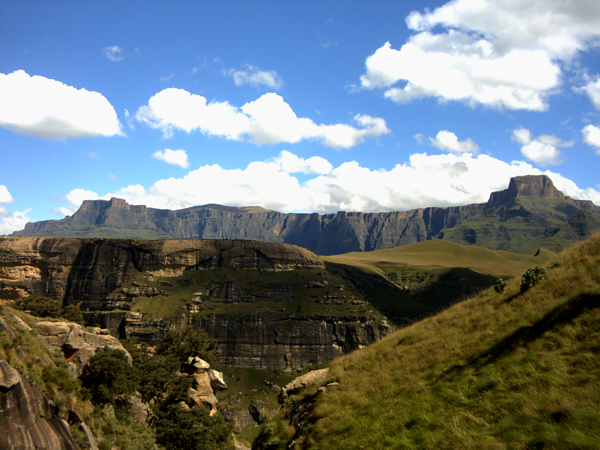

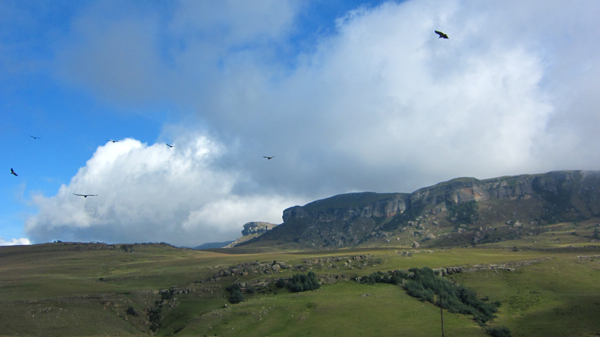

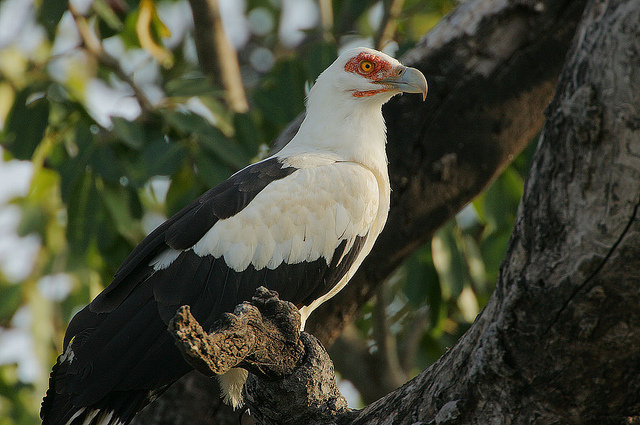


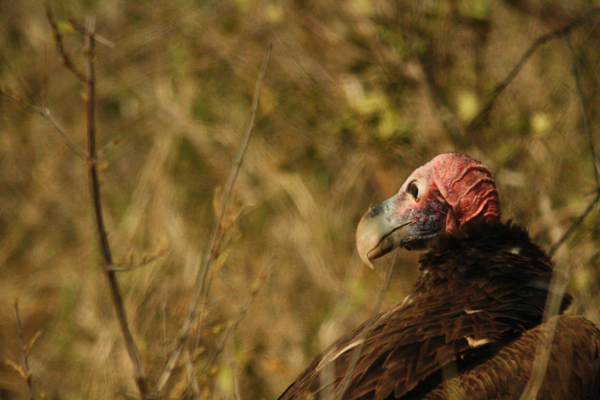
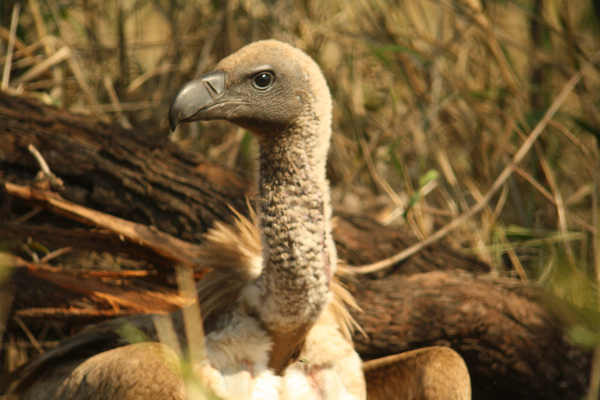

nice shots
Weird – the Palmnut Vulture looks just like a Muscovy Duck! Great photos/post!